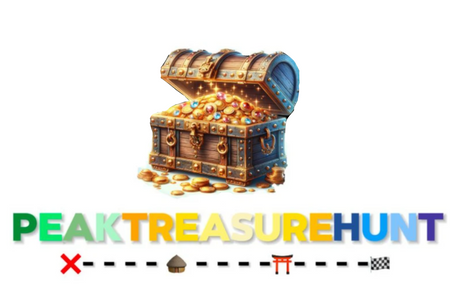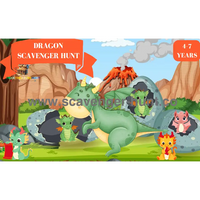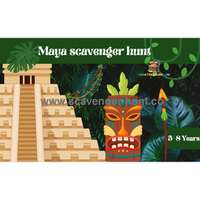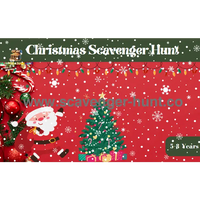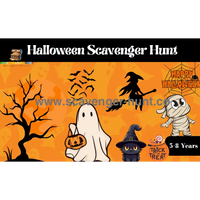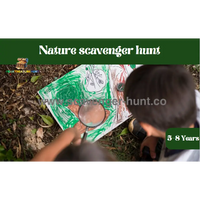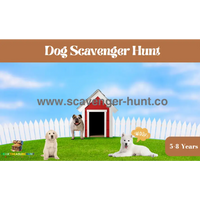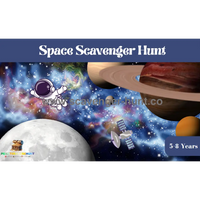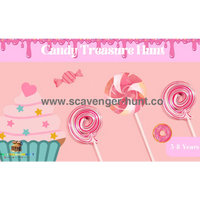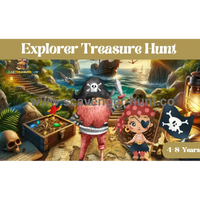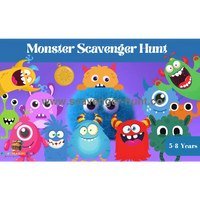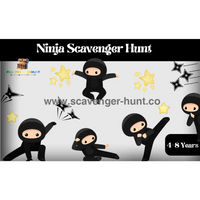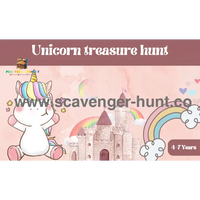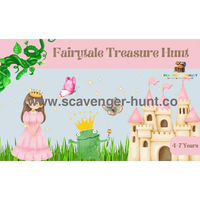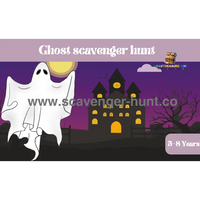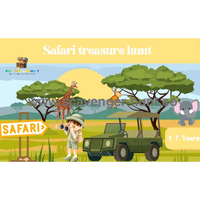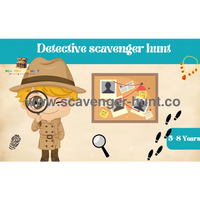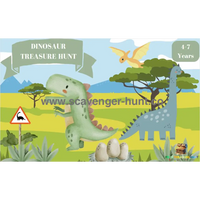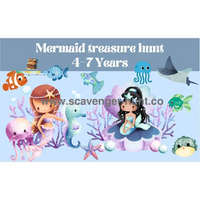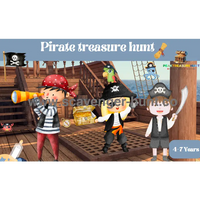Easter Adventure Awaits: A Delightful Scavenger Hunt For The Whole Family

- Planning Your Ultimate Easter Scavenger Hunt
- Getting Started
- Crafting the Clues
- Safety First: Ensuring a Joyful and Secure Hunt
- Post-Hunt Celebration
- Wrapping Up
- Conclusion
- Summary
- The Ultimate Guide to Hosting an Easter Scavenger Hunt
- 1. What are good items to include in an Easter scavenger hunt?
- 2. How do you organize an Easter scavenger hunt for different age groups?
- 3. What are some creative clue ideas for an Easter scavenger hunt?
- 4. How long should an Easter scavenger hunt last?
- 5. Can an Easter scavenger hunt be done indoors?
- 6. What are some unique themes for an Easter scavenger hunt?
- 7. How do you ensure safety during an Easter scavenger hunt?
- 8. Can you incorporate educational elements into an Easter scavenger hunt?
- 9. How do you manage competition in an Easter scavenger hunt?
- 10. What are some non-candy alternatives for Easter scavenger hunt prizes?
🐇The Ultimate Easter Scavenger Hunt Adventure
Easter is a time of joy and celebration, marking the arrival of spring with vibrant colors, family gatherings, and, of course, the eagerly awaited Easter egg hunts. But why stop at just eggs? This year, elevate your Easter festivities with an exciting and comprehensive Easter Scavenger Hunt, perfect for kids and families. In this ultimate Easter adventure, participants will embark on a quest to find traditional Easter objects like eggs, bonnets, and the much-loved chocolate rabbit.
Planning Your Ultimate Easter Scavenger Hunt
Getting Started
Embarking on the adventure of an Easter Scavenger Hunt begins with selecting the perfect location. The hunt can unfold in a variety of settings, each with its unique charm:
- Your Backyard: Ideal for a more personal and intimate hunt, offering a safe and controlled environment.
- Local Park: Provides ample space and natural hiding spots, ideal for a larger group or a more expansive hunt.
- Indoors: Perfect for inclement weather, your home can be transformed into an Easter wonderland, with each room offering new surprises.
Essential Supplies
Gather the key elements to make your scavenger hunt a success:
- Easter Eggs: Use plastic eggs, which can be filled with delightful treats, candies, or clues leading to the next stage of the hunt.
- Easter Bonnets: Add a creative twist by including a bonnet-making session as part of the hunt, or use pre-made bonnets as a fun dress-up element.
- Chocolate Rabbit: No Easter scavenger hunt is complete without the classic chocolate rabbit, serving as the grand prize for the final discovery.
- Clue Cards: Tailor your clues to the age of the participants. They can be simple directions for younger children or riddles and puzzles for older ones.
- Baskets or Bags: Provide each participant with a basket or a bag to collect their Easter treasures as they navigate through the hunt.
Setting the Scene
Creating an immersive experience is key:
- Festive Decorations: Adorn your space with Easter-themed decorations. Use pastel-colored balloons, streamers, and banners to brighten up the area.
- Bunny Footprints: Add an element of surprise by creating bunny footprints leading to various clue spots.
- Floral Touches: Incorporate spring flowers, both real and artificial, to bring a sense of freshness and nature to your hunt.
Advanced Preparations
- Hide the Eggs: Strategically place the eggs in various locations, keeping in mind the safety and accessibility for the children.
- Craft Station: If including bonnet-making, set up a craft station with all necessary materials like glue, ribbons, and markers.
- Safety Check: Ensure that all areas are safe for children, particularly if the hunt is outdoors or in a public space.
Inclusive and Fun for All
- Age-Appropriate Variations: For families with children of different ages, consider having separate hunt zones or varying the difficulty of the clues.
- Team Spirit: Encourage teamwork by pairing younger children with older ones or adults, fostering a sense of collaboration.
Wrapping Up the Hunt
- Prize Distribution: Once all the clues are found and the chocolate rabbit is discovered, gather everyone for a prize-giving ceremony.
- Photo Session: Create lasting memories by taking photographs of the children with their Easter hauls and bonnets.
By meticulously planning your Easter Scavenger Hunt with these steps, you're all set to provide an unforgettable Easter experience filled with joy, discovery, and lots of Easter fun!
Crafting the Clues
The success of your Easter Scavenger Hunt hinges on the cleverness and creativity of your clues. These are not just directions but gateways to the next exciting discovery.
Types of Clues:
- Visual Clues: Ideal for younger children. Use colorful pictures or symbols that lead them to specific locations or items.
- Riddles: Engage older children with riddles that challenge their thinking and problem-solving skills. These can be related to Easter or spring themes.
Examples of Clues:
- For a Flower Pot: "Where petals rest and stems grow tall, look in the pot against the wall."
- Near a Tree: "Under the shade where birds like to sing, find your next clue near the swing."
These clues can guide children to explore various parts of the garden or house, adding an element of surprise at each turn.
The Hunt in Action:
- Kick-off: Start by gathering the participants, distributing baskets or bags, and explaining the rules and clue-reading strategies.
- First Clue: Hand out the initial clue to set them off on their Easter adventure.
- Bonnets Discovery: Include a clue that leads to a hidden stash of Easter bonnets, adding a crafty twist by letting the kids decorate their finds as a mini-event within the hunt.
- Navigating the Hunt: Ensure each clue logically leads to the next, creating a smooth flow that maintains excitement and anticipation.
The Grand Finale:
- The Ultimate Prize: The final clue should be the most challenging, leading to the grand prize – the coveted chocolate rabbit, perhaps hidden in a spot that requires a bit of extra searching or solving a final puzzle.
Safety First: Ensuring a Joyful and Secure Hunt
- Safe Locations: Double-check that all clue locations are safe and accessible for the children, free from potential hazards.
- Supervision in Public Areas: If the hunt takes place in a public area, maintain vigilant adult supervision to ensure every child’s safety throughout the event.
- Allergy Awareness: Be acutely aware of any food allergies, particularly concerning the treats within Easter eggs or the chocolate rabbit. Offer alternative prizes if necessary to ensure all children can participate safely.
Post-Hunt Celebration
After the hunt, gather everyone to share their experiences and showcase their decorated bonnets. This is also a perfect time for a small reward ceremony, where each child receives a token for their enthusiastic participation.
By thoughtfully crafting your clues and meticulously planning the hunt, you ensure not just a fun-filled Easter activity but an engaging adventure that children will remember and cherish. With safety as a priority and creativity as your guide, your Easter Scavenger Hunt is sure to be a delightful success!
Wrapping Up
Once all the clues have been found and the chocolate rabbit has been claimed, gather everyone together to share their experiences. This can also be a great time for a group photo with everyone wearing their Easter bonnets and holding their treasures.
The Joyful Conclusion
After the whirlwind of excitement and exploration, it's time to bring your Easter Scavenger Hunt to a memorable close. This is a crucial part of the event where participants can bask in their accomplishments and share the joy of their discoveries.
Gathering and Sharing
- Group Assembly: Call everyone together, perhaps in a central location or a comfortable gathering spot, like your living room or a picnic area in the park.
- Storytelling Time: Encourage each participant, especially the children, to share their experiences. Ask them to talk about their favorite part of the hunt, the most challenging clue they solved, and their excitement in finding the treasures, particularly the elusive chocolate rabbit.
- Acknowledging Efforts: Take the time to acknowledge each participant's effort and enthusiasm. Celebrate their successes, whether it was finding the most eggs, crafting the most creative Easter bonnet, or solving the most challenging riddle.
Photo Session
- Capture the Moment: Arrange a group photo session. This is a wonderful opportunity to capture the memories of the day. Have everyone wear their Easter bonnets and hold up their finds, especially the prized chocolate rabbit.
- Fun Poses: Encourage fun and creative poses. Maybe a mock 'rabbit ears' pose for the kids, or holding the Easter eggs up as if they're precious jewels.
- Multiple Shots: Take several photos - some posed and some candid to capture the essence of the day.
Prize and Certificate Distribution
- Rewards for All: If you have prepared certificates or small prizes, now is the time to hand them out. Each child could receive a certificate for participation, along with any special recognitions, like 'Best Detective' or 'Egg-cellent Finder'.
- Special Mentions: Acknowledge any particularly noteworthy achievements or displays of teamwork and sportsmanship during the hunt.
Reflection and Feedback
- Group Reflection: Engage the group in a reflection session. Discuss what they learned, what they enjoyed the most, and what could be improved for next time.
- Feedback from Participants: Ask for feedback, especially from the older children. What did they think of the clues? Were they too easy, too hard, or just right?
Snack and Relaxation Time
- Light Refreshments: After all the excitement, it’s a good idea to have some light refreshments available. This could be simple snacks, Easter treats, or a mini buffet.
- Relax and Socialize: Allow some time for everyone to relax, enjoy their snacks, and socialize. This is an excellent opportunity for parents to mingle and for children to play with their new-found friends.
Easter Crafts and Activities
- Post-Hunt Crafts: Engage the children in some post-hunt Easter crafts. This could be anything from decorating egg-shaped cookies, making Easter cards, or creating bunny masks.
- Relaxed Games: Set up some relaxed and non-competitive games for the children to enjoy as the event winds down.
Closing Remarks
- Thank Everyone: Conclude your event with a heartfelt thank you to all the participants, helpers, and parents. Acknowledge their contributions in making the scavenger hunt a success.
- Future Events Teaser: If you plan to make this an annual event, tease the next scavenger hunt. Leave them excited and looking forward to what next year’s Easter hunt might entail.
Clean-Up
- Organized Clean-Up: Organize a quick but efficient clean-up of the area, ensuring that no litter or items are left behind. Involve the older children in this process to teach responsibility and respect for the environment.
Conclusion
The wrap-up of your Easter Scavenger Hunt is as important as the hunt itself. It’s a time for recognition, relaxation, and reflection. By giving participants the opportunity to share and celebrate together, you not only close the event on a high note but also create lasting memories that participants will cherish. This final gathering reinforces the sense of community and shared joy that is at the heart of Easter celebrations.
Summary
An Easter scavenger hunt is a wonderful way to add excitement and a sense of adventure to your Easter celebrations. It’s not just about the thrill of the hunt; it's about creating lasting memories with family and friends. So, this Easter, get ready to watch as your backyard or living room turns into a land of discovery and joy, filled with laughter, excitement, and a touch of Easter magic. Happy Easter and happy hunting!
An Easter scavenger hunt stands as a delightful and innovative way to infuse your Easter celebrations with added layers of excitement, adventure, and interactive fun. This activity goes beyond the traditional Easter egg hunt by incorporating a series of clues, challenges, and treasures that engage participants in a captivating journey of discovery.
Tailored to suit any environment, whether it’s the cozy confines of a living room or the sprawling expanse of a backyard, an Easter scavenger hunt transforms ordinary spaces into realms of mystery and delight. Participants, be they children or adults, embark on a quest that not only challenges their problem-solving skills but also sparks their imagination and sense of wonder.
The true essence of this Easter activity lies in its ability to create unforgettable moments. It’s about the shared laughs when a particularly tricky clue is deciphered, the teamwork as families and friends come together in search of the next clue, and the pure joy in the eyes of participants as they uncover hidden Easter treasures. The inclusion of various Easter symbols, from brightly colored eggs to whimsical Easter bonnets and the coveted chocolate rabbit, adds a traditional touch to this modern adventure.
Moreover, an Easter scavenger hunt is more than just a game; it’s an opportunity to create lasting memories. It's a time for bonding, for experiencing the joy of Easter in a unique way, and for participating in an activity that is as rewarding as it is entertaining. The photographs and stories from this day will become cherished parts of family lore, recounted at future gatherings and cherished for years to come.
So this Easter, step into a world of exploration and jubilation. Prepare your clues, set up your hunt, and watch as the magic unfolds. Whether you’re searching for eggs hidden in the grass or solving riddles that lead to a chocolatey surprise, an Easter scavenger hunt promises a day of fun, laughter, and family fun. Here’s to an Easter filled with the spirit of adventure and the warmth of shared experiences. Happy Easter and happy hunting!
Easter is a time of celebration, and what better way to add joy to this festive occasion than with an Easter scavenger hunt? Whether you're a seasoned planner or a first-timer, you likely have questions about creating the perfect hunt. From crafting age-appropriate clues to incorporating technology, let's dive into your most common queries and set the stage for an unforgettable Easter adventure.
The Ultimate Guide to Hosting an Easter Scavenger Hunt
Easter is just around the corner, and what better way to celebrate than with an exciting Easter scavenger hunt? Whether you're a seasoned planner or a first-timer, this guide will answer the most common questions to help you create a memorable and enjoyable experience for everyone.
1. What are good items to include in an Easter scavenger hunt?
The charm of an Easter scavenger hunt lies in its surprises. Mix traditional items like colored Easter eggs and candies with unique finds such as small toys, handmade crafts, or themed objects. The variety will keep participants engaged and curious.
Easter is synonymous with fun, family, and of course, the excitement of an Easter scavenger hunt. A well-planned hunt can transform a regular Easter into an unforgettable adventure. The key to a successful scavenger hunt lies in the items you choose to hide. This article will explore a variety of items that you can include in your Easter scavenger hunt, ensuring that it's enjoyable and engaging for all ages.
-
Traditional Easter Eggs: No Easter scavenger hunt is complete without the quintessential colored Easter eggs. Whether they're hard-boiled eggs dyed in vibrant colors or plastic eggs filled with surprises, these are a must-have in your scavenger hunt list.
-
Sweet Treats: Candies and chocolates are a hit among participants of all ages. Consider hiding them in creative places or inside other objects for an added element of surprise.
-
Small Toys: Incorporating small toys can elevate the excitement, especially for younger participants. Think of miniature cars, bouncy balls, cute erasers, or small plush toys.
-
Handmade Crafts: Handmade crafts add a personal touch to your scavenger hunt. These could be simple DIY Easter crafts, personalized messages, or small, decorated paper mache eggs.
-
Themed Objects: Depending on your scavenger hunt theme, you can include items that match. For example, if you're doing a nature-themed hunt, small potted plants or seed packets can be great finds.
-
Educational Items: For a more stimulating experience, include items that challenge the mind, like puzzle pieces, brain teasers, or trivia cards related to Easter or spring.
-
Customized Clues: Each item can come with a clue leading to the next one. These can range from simple riddles for kids to more complex puzzles for adults.
-
Art Supplies: Encourage creativity by hiding art supplies like crayons, stickers, or coloring books. This not only adds variety but also provides a post-hunt activity.
-
Activity Vouchers: These can be 'winning tickets' for activities like an extra hour of TV time, a family game night, or a special treat, adding an exciting twist to the hunt.
-
Photographic Challenges: For a modern twist, include challenges where participants must take a selfie with a specific item or in a particular spot.
An Easter scavenger hunt is a fantastic way to add excitement and joy to your Easter celebrations. By mixing traditional items with unique and personalized finds, you can create an engaging and memorable experience for everyone involved. The key is to tailor the items to the age and interests of the participants, ensuring that each find is a delightful surprise. Happy hunting, and may your Easter be filled with joy, surprises, and cherished memories!
2. How do you organize an Easter scavenger hunt for different age groups?
Tailoring your scavenger hunt to different age groups ensures everyone has fun. For little ones, keep clues simple and within a confined area. For older children and adults, spread out the hunt area and incorporate more challenging clues.
Organizing an Easter scavenger hunt that caters to various age groups can be a delightful yet challenging task. Ensuring that each participant, regardless of age, finds joy and excitement in the activity is key to a successful event. This guide will provide comprehensive strategies for organizing an Easter scavenger hunt that is engaging and appropriate for different age groups.
1. For Toddlers and Preschoolers:
- Simplified Clues: Use visual clues like pictures or icons. The idea is to make the hunt intuitive and easy to follow.
- Smaller Hunt Area: Limit the hunt to a safe, enclosed area like a backyard or a specific room to ensure safety and ease of finding items.
- Tangible Rewards: Small toys, stickers, or chunky, safe-to-handle objects work well as rewards.
- Interactive Elements: Incorporate elements like ‘find something red’ or ‘find something that makes a noise’ to make it educational and fun.
2. For School-Aged Children (5-12 Years):
- Themed Clues: Use Easter-themed riddles or simple puzzles. Clues can be written or involve basic problem-solving skills.
- Moderately Challenging Areas: Expand the hunt area to include a garden or multiple rooms. This age group enjoys the thrill of exploration.
- Varied Prizes: Mix traditional treats like chocolates with educational items like books or craft kits.
- Team Play: Encourage team-building by grouping children or pairing younger kids with older ones.
3. For Teenagers:
- Complex Clues: Utilize more sophisticated puzzles, cryptic messages, or clues requiring internet research.
- Larger Area: Consider a neighborhood or community park hunt, where safety permits, to add a sense of adventure.
- Valued Rewards: Offer rewards that appeal to teenagers like gift cards, gadgets, or experiences.
- Competitive Element: Introduce time limits or challenges for added excitement.
4. For Adults:
- Advanced Puzzles: Use brain-teasers, crosswords, or clues requiring cultural or historical knowledge.
- Wide Area: Don't hesitate to use a larger area, such as an entire house or community area, for the hunt.
- Sophisticated Prizes: Opt for higher value items, or even gag gifts for humor.
- Team vs. Individual Play: Depending on the group, decide whether a team-based or individual competitive format works better.
5. Inclusive Strategies for Mixed Age Groups:
- Balanced Clues: Combine different types of clues – some easy for children, some challenging for adults.
- Zoned Areas: Allocate specific areas for different age groups or mix areas but tailor the clues found there accordingly.
- Collaborative Tasks: Encourage collaboration where older kids or adults help younger ones.
- Diverse Rewards: Offer a range of prizes catering to different age groups.
Organizing an Easter scavenger hunt for different age groups doesn’t have to be daunting. By considering the needs, abilities, and interests of each age group, you can create an inclusive, exciting, and memorable experience. Remember, the ultimate goal is to bring joy and create lasting Easter memories for everyone involved. With these strategies, your Easter scavenger hunt is sure to be a hit! 🐇🔍🎉
3. What are some creative clue ideas for an Easter scavenger hunt?
Clues are the heart of any scavenger hunt. For younger participants, use picture clues or simple riddles. For adults, try cryptic puzzles or clues that require a bit of research. Rhymes and themed clues related to Easter or spring can add a festive touch.
An Easter scavenger hunt is only as good as its clues. Creative and well-thought-out clues not only add to the excitement but also challenge the participants in a fun and engaging way. This guide will delve into a variety of clue ideas suitable for different age groups, ensuring your Easter scavenger hunt is a delightful, brain-teasing adventure.
1. Clues for Younger Participants:
- Picture Clues: Use images or cartoons that lead to the location of the next item. This is particularly engaging for kids who are not yet reading.
- Simple Riddles: Basic riddles or puzzles that involve colors, shapes, or easy-to-find items in the house or yard.
- Rhyming Clues: Simple, short poems that hint at the location of the next item. Rhymes are fun and easier for young children to remember.
- Interactive Clues: Clues that require doing a simple task, like singing a nursery rhyme or hopping like a bunny, to receive the next hint.
2. Clues for Older Children and Teenagers:
- Easter-themed Riddles: Riddles that require a bit more thought, incorporating elements of Easter and spring.
- Map and Compass Clues: Introduce basic orienteering with a simple map or compass directions leading to the next clue.
- Puzzle Pieces: Each clue leads to a puzzle piece, and the completed puzzle reveals the final location.
- Code Breaking: Use simple ciphers or secret codes that need to be deciphered to reveal the next clue.
3. Clues for Adults:
- Cryptic Puzzles: Challenging puzzles or clues that involve lateral thinking or even Easter-related trivia.
- Historical or Cultural References: Clues that require a bit of research or knowledge about history, literature, or cultural traditions related to Easter.
- Scavenger Hunt Apps: Use technology to create digital clues that can be accessed through smartphones, adding a modern twist.
- Multi-Step Clues: Clues that lead to other clues, making the hunt more complex and engaging.
4. Universal Clue Ideas:
- Rhymes and Themed Clues: Regardless of age, rhyming clues or clues tied to a specific theme, such as Easter or spring, add a festive and fun element.
- Photo Clues: Use photographs of locations where the next clue or item can be found, adding a visual element that's enjoyable for all ages.
- Audio Clues: Record clues or messages that need to be listened to, adding an auditory dimension to the hunt.
The possibilities for creating engaging and creative clues for your Easter scavenger hunt are endless. Tailoring your clues to the age and interests of your participants will ensure everyone has a great time. Remember, the goal is to challenge the hunters, but also to ensure that the hunt remains fun and not overly difficult. With these ideas in hand, you're ready to create an Easter scavenger hunt that will be remembered for years to come. Happy hunting! 🌸🐰🔎
4. How long should an Easter scavenger hunt last?
The duration of your hunt can vary. A good rule of thumb is 30 minutes to an hour for younger children and up to a couple of hours for older participants. The key is to keep it engaging without causing fatigue.
The duration of an Easter scavenger hunt is a crucial aspect that can make or break the event. Too short, and it may feel anticlimactic; too long, and it could lead to fatigue or loss of interest. This article explores the optimal length for an Easter scavenger hunt, offering a balanced approach to ensure that the event is enjoyable and memorable for everyone involved.
1. For Toddlers and Preschoolers:
- Duration: 30 minutes to an hour. Younger children have shorter attention spans and may tire easily.
- Focus on Fun: Keep the hunt playful and light. The emphasis should be on the experience rather than competition.
- Simple Clues and Close Proximity: To keep within the time frame, use easy-to-find clues and confine the hunt to a small area.
2. For School-Aged Children:
- Duration: 1 to 1.5 hours. This age group can handle a slightly longer and more challenging hunt.
- Balance Challenge with Engagement: Offer a mix of easy and moderately challenging clues to keep them engaged without frustration.
- Rest Stops: Consider having short breaks or stations with snacks and drinks, especially if the hunt is outdoors.
3. For Teenagers:
- Duration: Up to 2 hours. Teenagers enjoy more complex and competitive activities.
- Advanced Challenges: Incorporate multi-step clues or tasks that require problem-solving skills.
- Incorporate Technology: Use apps or digital clues to make the hunt more appealing to this age group.
4. For Adults:
- Duration: 1.5 to 2.5 hours. Adults can engage in a longer, more intricate hunt.
- Complexity and Creativity: Use sophisticated puzzles and incorporate themes that interest the adult participants.
- Socializing Breaks: Allow time for mingling and relaxation, making the hunt a social event as well.
5. General Tips for All Ages:
- Clear End Point: Regardless of age, have a clear conclusion to the hunt.
- Adjust as Needed: Be flexible and ready to adjust the duration based on how the hunt is progressing and the participants' engagement levels.
- Feedback Loop: Consider getting feedback from participants during and after the hunt to gauge their enjoyment and adjust the time for future events.
Conclusion: The duration of your Easter scavenger hunt should be tailored to the age and interest of the participants. The key is to keep it long enough to be challenging and enjoyable, but not so long that it leads to fatigue. With the right balance, your Easter scavenger hunt will be a cherished and fun-filled experience that participants of all ages will look forward to year after year. Happy Easter, and happy hunting! 🌷🐣🕒
5. Can an Easter scavenger hunt be done indoors?
Bad weather? No problem! An indoor scavenger hunt can be just as fun. Use different rooms and indoor props to hide items. This can also add a layer of complexity and creativity to your clue-making.
Easter is a time of joy and celebration, often accompanied by the excitement of an outdoor scavenger hunt. But what happens when the weather doesn't cooperate? Don't let rain or cold spoil your plans! An indoor Easter scavenger hunt can be equally, if not more, entertaining. This guide will show you how to create a memorable indoor scavenger hunt that brings all the fun of Easter inside your home.
1. Utilizing Indoor Spaces:
- Room-by-Room Adventure: Designate different rooms for different stages of the hunt. Each room can have a unique theme or type of clue.
- Creative Hiding Spots: Use bookshelves, couch cushions, plant pots, and other common household items as hiding places. This adds an element of surprise and discovery.
2. Crafting Indoor-Specific Clues:
- Household Riddles: Create clues that relate to the room or the items in it. For example, a clue hidden in a book could lead to the next one in a vase.
- Interactive Clues: Involve household objects in the clues. For instance, finding a key that opens a box or assembling a puzzle to reveal the next hint.
3. Adding Complexity and Creativity:
- Multi-Step Clues: For older children and adults, make the clues more complex by involving multiple steps or tasks within the house.
- DIY Crafts: Incorporate simple craft activities as part of the clues, like folding origami to reveal a hidden message.
4. Safety Considerations:
- Child-Proofing: Ensure that the hunt is safe for younger children by avoiding breakable items and ensuring no small, swallowable pieces are used.
- Accessible for All: Make sure the hunt is accessible for everyone, considering the mobility of all participants.
5. Enhancing the Indoor Experience:
- Themed Decorations: Decorate each room according to different Easter themes to enhance the festive atmosphere.
- Background Music: Play Easter or spring-themed music to set the mood and make the hunt more enjoyable.
An indoor Easter scavenger hunt is a fantastic alternative when outdoor plans are hindered by the weather. It offers an opportunity to get creative with your space and clues, making for an engaging and fun experience for all ages. With a little planning and imagination, your indoor Easter scavenger hunt can become a cherished tradition, rain or shine. So, let the indoor adventure begin and have a wonderful Easter! 🏠🐰🔍
6. What are some unique themes for an Easter scavenger hunt?
Consider adding a theme to your hunt. This could be anything from a color theme, a historical era, or even popular book characters. Themes can make your hunt more memorable and photogenic!
A themed Easter scavenger hunt can transform a traditional holiday activity into an extraordinary adventure. Themes add a layer of excitement and creativity, making the event more engaging and memorable for participants of all ages. In this article, we explore various unique themes that can be incorporated into your Easter scavenger hunt, ensuring it's not just a game, but a captivating experience.
1. Color-Themed Hunt:
- Monochrome Magic: Choose a specific color for the hunt. For example, a 'Yellow Easter', where all clues and items are shades of yellow.
- Rainbow Rally: Each clue leads to an item of a different color of the rainbow, culminating in a multi-colored finale.
2. Historical Era Themes:
- Ancient Civilizations: Base your hunt on ancient Egypt, Rome, or Greece. Clues and decorations can reflect these eras, and participants can dress up accordingly.
- Roaring Twenties: Infuse the glamour of the 1920s into your hunt with art deco designs and jazz music in the background.
3. Popular Book Characters:
- Adventures in Wonderland: Create an Alice in Wonderland-themed hunt, with clues and decorations inspired by the whimsical world.
- Magical Wizardry: A Harry Potter-themed hunt can include clues based on spells, potions, and magical creatures.
4. Nature and Wildlife Themes:
- Garden Galore: Center your hunt around the beauty of spring, with clues hidden in plant pots, under flower beds, or near garden ornaments.
- Animal Safari: An animal-themed hunt where each clue is associated with a different animal, leading to a wildlife trivia at the end.
5. Movie and TV Show Themes:
- Superhero Quest: Incorporate elements from popular superhero movies, with each clue or challenge requiring superhero-like skills or knowledge.
- Classic Cartoons: Use beloved cartoon characters as the basis for clues and challenges, appealing to both children and nostalgic adults.
6. Fantasy and Fairy Tales:
- Enchanted Forest: Create a fairy tale-like setting, with clues related to classic fairy tales and mythical creatures.
- Galactic Odyssey: For a space-themed hunt, clues can be related to planets, stars, and space exploration.
7. Interactive and Educational Themes:
- Science Sleuth: Make your hunt educational with science-themed clues involving simple experiments or puzzles.
- Artists and Artifacts: Each clue is associated with a famous artist or artwork, combining fun with a bit of art history.
Incorporating a unique theme into your Easter scavenger hunt not only makes the event more enjoyable but also stimulates creativity and learning. Whether you opt for a historical adventure, a dive into a fantasy world, or a journey through a favorite book, your themed Easter scavenger hunt is sure to be an unforgettable experience for all. So, pick a theme and let the themed Easter magic begin! 🎨🐇🔍
7. How do you ensure safety during an Easter scavenger hunt?
Safety is paramount. Define clear boundaries, supervise younger children, and remove potential hazards from the hunt area. Also, consider any allergies when selecting treats and prizes.
An Easter scavenger hunt is a delightful way to celebrate the holiday, but ensuring the safety of all participants is crucial. A safe hunt allows everyone to enjoy the event without worry. This guide provides essential tips on how to organize a fun-filled Easter scavenger hunt while prioritizing safety at every step.
1. Setting Clear Boundaries:
- Defined Area: Clearly define the area where the scavenger hunt will take place. This is particularly important for outdoor hunts to prevent participants from wandering too far.
- Safe Zones: Make sure the designated area is safe for all ages. Check for potential hazards like water bodies, steep inclines, or heavy traffic areas.
2. Supervising Young Children:
- Adult Supervision: Ensure that young children are accompanied by an adult or responsible older child at all times during the hunt.
- Buddy System: Implement a buddy system where children are paired up, ensuring that no child is left alone or unsupervised.
3. Checking for Hazards:
- Pre-Hunt Inspection: Conduct a thorough inspection of the hunt area for hazards such as sharp objects, poisonous plants, or unstable structures.
- Indoor Safety: For indoor hunts, ensure that small objects are out of reach for young children to prevent choking hazards.
4. Allergy Awareness:
- Allergen-Free Treats: Be mindful of common food allergies when selecting treats. Opt for allergen-free or labeled items so participants can easily identify safe options.
- Non-Food Prizes: Consider using non-food items as prizes, such as small toys, books, or craft supplies, to avoid allergy concerns.
5. Emergency Preparedness:
- First Aid Kit: Have a basic first aid kit accessible during the hunt to address minor injuries promptly.
- Emergency Contacts: Keep a list of emergency contacts and be aware of the nearest medical facility in case of an unforeseen event.
6. Weather Considerations:
- Weather Check: Monitor weather conditions leading up to the event, especially for outdoor hunts. Have a contingency plan for bad weather.
- Sun Protection: For sunny days, remind participants to use sun protection like sunscreen and hats.
7. Communicating Rules and Guidelines:
- Pre-Hunt Briefing: Before the hunt begins, clearly communicate the rules, boundaries, and safety guidelines to all participants.
- Contact Information: Provide adults with contact information and ensure everyone knows who to contact in case someone gets lost or needs assistance.
Safety is the foundation of a successful Easter scavenger hunt. By setting clear boundaries, supervising young participants, being mindful of allergies, and preparing for emergencies, you can ensure a safe and enjoyable experience for everyone. Remember, a safe hunt is a fun hunt. Happy Easter, and happy hunting! 🐣🔍🛡️
8. Can you incorporate educational elements into an Easter scavenger hunt?
An Easter scavenger hunt can be both fun and educational. Include clues that require solving a math problem, identifying plants or animals, or even historical trivia. This is a great way to stimulate young minds.
An Easter scavenger hunt doesn't just have to be about finding eggs and treats; it can also be a fantastic opportunity for learning and intellectual stimulation. By incorporating educational elements into your scavenger hunt, you can create an experience that is both entertaining and enriching for participants of all ages. This article will guide you through various ways to infuse educational aspects into your Easter scavenger hunt, making it a more valuable and enjoyable experience.
1. Math Challenges:
- Problem-Solving Clues: Include clues that require solving basic math problems to find the next location or item. For younger children, these could be simple addition or subtraction, while older participants might enjoy more complex equations or puzzles.
- Measure and Seek: Integrate tasks that involve measuring distances or counting objects, which subtly incorporate math skills into the hunt.
2. Nature and Science Exploration:
- Identifying Flora and Fauna: Use clues that encourage participants to identify different types of plants, flowers, or birds found in your hunt area.
- Simple Experiments: Include clues that lead to conducting a simple, safe science experiment, combining fun with practical learning.
3. Historical and Cultural Trivia:
- History-based Clues: Create clues that involve historical facts or trivia, perhaps related to Easter or the spring season.
- Cultural Exploration: Include tasks that involve learning about Easter traditions around the world or other cultural elements.
4. Language and Literature:
- Word Puzzles: Use crossword puzzles, word searches, or anagrams as clues.
- Storytelling Elements: Create a storyline for your scavenger hunt, perhaps based on a popular children’s book or a historical event, with each clue contributing to the narrative.
5. Art and Creativity:
- Artistic Clues: Incorporate clues that involve drawing, coloring, or identifying famous artworks or artists.
- DIY Crafts: Include stations where participants can engage in a simple craft activity related to Easter or spring.
6. Geography and Orienteering Skills:
- Map Reading: Use maps as part of the clues, teaching basic map-reading and orienteering skills.
- Global Landmarks: Include clues related to world geography, such as identifying countries, capitals, or famous landmarks.
7. Health and Physical Education:
- Physical Challenges: Incorporate clues that involve physical activity, such as hopping like a bunny for a certain distance, promoting exercise and health.
- Nutrition Education: Use clues that educate about healthy eating, perhaps leading to a snack that is both delicious and nutritious.
An educational Easter scavenger hunt is a brilliant way to combine the joy of Easter celebrations with the enrichment of learning. By integrating elements from various fields such as math, science, history, and art, you can create an engaging and intellectually stimulating experience. This approach not only enhances the fun of the traditional scavenger hunt but also leaves participants with newfound knowledge and skills. So, get ready to set up an Easter scavenger hunt that is as educational as it is entertaining! 🐰🔎📚
9. How do you manage competition in an Easter scavenger hunt?
To keep the competition healthy, encourage teamwork, and consider having different categories of prizes. Focus on the experience and exploration aspect, rather than just the winning.
Competition can add excitement to an Easter scavenger hunt, but managing it effectively is key to ensuring a fun and inclusive experience for all participants. The goal is to strike a balance where the competitive spirit enhances the event rather than overshadowing the joy of participation. This guide will explore strategies to manage competition in a way that keeps the scavenger hunt engaging, fair, and enjoyable for everyone involved.
1. Encouraging Teamwork:
- Team Formation: Organize participants into teams, mixing ages and abilities to balance skill levels. This promotes collaboration and helps level the playing field.
- Team-Based Challenges: Design clues and tasks that require teamwork, such as solving a puzzle together or finding items that need multiple people to retrieve.
2. Different Categories of Prizes:
- Diverse Prize Categories: Instead of a single winner, have different prize categories. For example, 'Most Team Spirit', 'Best Problem-Solvers', or 'Most Creative Solutions'.
- Non-Material Rewards: Consider rewards that are experience-based, like an extra turn in a favorite game or choosing a movie for movie night.
3. Focusing on the Experience:
- Enjoyment over Winning: Emphasize the fun of participation and the joy of discovery. The hunt itself, with its challenges and surprises, should be the main attraction.
- Celebratory Atmosphere: Create a festive environment where the focus is on celebrating Easter and being together, rather than solely on competition.
4. Fair and Clear Rules:
- Well-Defined Rules: Clearly communicate the rules before the hunt begins. Ensure that everyone understands what is allowed and what isn’t to avoid disputes.
- Impartial Judges: If possible, have neutral judges to oversee the hunt and make decisions on any disputes that may arise.
5. Adjusting for Age and Ability:
- Age-Appropriate Challenges: Tailor the hunt to accommodate different ages and abilities, ensuring that younger or less able participants are not at a disadvantage.
- Special Accommodations: For children with special needs or younger kids, provide additional hints or assistance to keep them engaged and competitive.
6. Celebrating All Participants:
- Recognition for All: At the end of the hunt, take time to acknowledge each participant or team for their efforts, creativity, or teamwork.
- Group Rewards: Consider group rewards that benefit all participants, like a special treat or activity after the hunt.
Managing competition in an Easter scavenger hunt is about fostering a spirit of fun, fairness, and teamwork. By focusing on the experience, encouraging collaboration, and having diverse prize categories, you can ensure that the event is enjoyable for everyone. Remember, the true essence of an Easter scavenger hunt lies in the shared joy of the experience, not just the thrill of the win. Happy Easter, and happy hunting! 🐇🔍🏆
10. What are some non-candy alternatives for Easter scavenger hunt prizes?
If you're looking to reduce sugar intake, there are plenty of non-candy prize options. Consider small books, puzzles, craft supplies, or tokens for family activities. These can be more lasting and meaningful than sweets.
While candy is a traditional treat for Easter scavenger hunts, there is a growing interest in non-candy alternatives that are both healthy and engaging. Whether you're looking to reduce sugar intake or simply offer more variety, there are numerous creative and exciting options for scavenger hunt prizes. This article will explore a variety of non-candy prize ideas that are sure to delight participants of all ages and make your Easter scavenger hunt a memorable and wholesome experience.
1. Educational and Fun Books:
- Storybooks and Picture Books: For younger children, picture or storybooks can be a wonderful prize, encouraging reading and imagination.
- Activity Books: Puzzle books, coloring books, or educational workbooks are great for school-aged children, combining fun with learning.
2. Puzzles and Brain Teasers:
- Jigsaw Puzzles: These can range from simple designs for younger kids to more complex puzzles for older children and adults.
- Brain Teaser Games: Offer small brain teaser toys or logic puzzles, which are perfect for challenging the mind in a fun way.
3. Art and Craft Supplies:
- DIY Craft Kits: These can include simple projects like making Easter decorations, friendship bracelets, or painting activities.
- Art Supplies: Crayons, markers, sketch pads, or watercolor sets can inspire creativity and provide hours of entertainment.
4. Outdoor and Active Play:
- Sports Equipment: Small balls, jump ropes, or frisbees encourage physical activity and outdoor play.
- Garden Tools: Kid-sized gardening tools or seed packets can promote an interest in nature and the outdoors.
5. Family Activity Tokens:
- Experience Vouchers: Create homemade coupons for family activities like a movie night, extra playtime, or a special outing.
- Game Night Tokens: Tokens that can be exchanged for choosing the next family game night activity or game.
6. Small Toys and Figurines:
- Miniature Toys: Action figures, dolls, or animal figurines can be exciting finds for children.
- Collectibles: For older children or collectors, themed collectible items or trading cards can be a big hit.
7. Personal Care and Novelty Items:
- Bath Bombs and Soaps: Fun-shaped soaps or kid-friendly bath bombs make bath time more fun.
- Novelty Items: Unique, age-appropriate gadgets or fun stationery items can be both useful and enjoyable.
8. Homemade Treats:
- Healthy Snacks: Homemade granola bars, fruit packs, or trail mix offer a healthier alternative to traditional sweets.
- Baked Goods: Offer homemade cookies or muffins as a sweet treat without the excess sugar of candy.
Choosing non-candy prizes for your Easter scavenger hunt can add an element of surprise and creativity to your event. These alternatives not only offer a break from sugary treats but also provide lasting value, promoting learning, creativity, and physical activity. By selecting thoughtful and engaging prizes, you can create an Easter scavenger hunt that is fun, healthy, and rewarding for everyone involved. Happy Easter, and happy treasure hunting! 🐣🎁🌿
In conclusion, an Easter scavenger hunt is a fantastic way to celebrate the holiday, engage with friends and family, and enjoy the thrill of the hunt. With a little creativity and planning, you can create an event that everyone will remember for years to come. Happy hunting! 🐣🌷🔍
Discover our Complete Scavenger Hunts Collection.
Recent Articles
- Night Hike with Children: Ideas, Tips, and the Right Equipment for a Memorable Adventure
- Easter Stories For Kids
- Who Invented the Scavenger Hunt? The Fascinating History Behind a Classic Game
- Viking Treasure Hunt: A Children's Adventure Through Norse History
- Ultimate Ninja Birthday Games: Fun Activities for Young Warriors
- The Ultimate Guide to Easy Scavenger Hunt Clues
Categories
- 15 Chidren´s Birthday Party Venues Both Parents and Children Will Love
- 15 Ingenious Scavenger Hunt Ideas for Kids: A Journey of Discovery and Play
- 200+ Hilarious Minute To Win It Games
- 25 Amazingly Fun Outdoor Activities for Adults in 2024
- 3 Reasons Why You Should Be Doing Outdoor Scavenger Hunts With Kids
- 30 Best Party Games For Adults And Kids
- 4 Creative Indoor Scavenger Hunt Ideas for Kids
- 4 Creative Outdoor Scavenger Hunt Ideas for Kids
- 4th Of July Scavenger Hunt
- 5 ways to plan a successful scavenger hunt
- 50+ Amazing Christmas Gift Exchange Ideas
- 6 Reasons Scavenger Hunts Make Great Extension Activities
- A Treasure Trove of Adventure: Birthday Scavenger Hunts for Kids
- ABC Book for Kids
- ABC Books for Kids
- Adventure Awaits: How to Host the Ultimate Treasure Hunt Birthday Party for Kids
- Adventure Awaits: The Ultimate Scavenger Hunt Printable Guide for Kids
- All About Scavenger Hunts: The Ultimate Guide
- Alphabet Scavenger Hunt Free Printable
- and Activities for Kids
- and More!
- and the Right Equipment for a Memorable Adventure
- Answers To Your Top 10 Questions About Scavenger Hunts And Treasure Hunts
- Answers To Your Top 30 Questions About Scavenger Hunts
- Are there safety considerations for scavenger hunts?
- Are there safety considerations for treasure hunts?
- Baby Shower Game
- Baby Shower Game Bingo
- Baby Shower Game Prizes
- Baby Shower Game Prizes for Children
- Baby Shower Games
- Baby Shower Themes for Girls
- Back To School Scavenger Hunt For Kids
- Best Photo Scavenger Hunt Ideas
- Best Scavenger Hunt Ideas
- Bingo
- Birthday Party
- Birthday Party Games Printable
- Birthday Party Scavenger Hunt Ideas
- Birthday Riddle Scavenger Hunt
- Birthday Scavenger Hunt
- Birthday Scavenger Hunt Clues
- Birthday Scavenger Hunt for Kids
- Birthday Scavenger Hunt Riddles
- Bowling
- Bowling Birthday Party
- Bringing Joy to Baby Showers: A Complete Guide to 100 Pink and Blue Bingo Cards Game
- Bucket List
- Camping Scavenger Hunt
- Camping Scavenger Hunt List
- Camping Scavenger Hunts
- Can a birthday scavenger hunt be done indoors?
- Can I do a scavenger hunt indoors or outdoors?
- Can I do a treasure hunt indoors or outdoors?
- Celebrate in Style: The Ultimate Birthday Quiz
- Chidren´s Birthday Party Venues
- Children's Birthday Party Invitations
- Children's Birthday Party Planner
- Children's Birthday Party Venues Near Me
- Children's birthday treasure hunt: the ultimate guide to unforgettable adventures
- Children’s Birthday Party Games
- Christmas Bingo Cards
- Christmas Gift Exchange
- Christmas Gift Exchange Ideas
- Christmas Light Scavenger Hunt
- Christmas Scavenger Hunt
- Christmas Scavenger Hunt For Kids
- Christmas Scavenger Hunt Ideas
- Classroom Scavenger Hunt
- Creating Unforgettable Memories: Your Guide to Hosting an Indoor Treasure Hunt Birthday Party
- Decorations
- Dinosaur Adventure: An Educational and Fun Game Concept for the Perfect Kid's Birthday
- DIY Confetti Poppers
- Easter Adventure Awaits: A Delightful Scavenger Hunt For The Whole Family
- Easter Scavenger Hunt
- Easter Scavenger Hunt For Kids
- Easter Scavenger Hunt For Teens
- Easter Scavenger Hunt Free
- Easter Scavenger Hunts
- Easter Stories For Kids
- Easter Treasure Hunt
- Easter Treasure Hunt Free
- Easy scavenger hunt clues
- Embark on an Exciting Adventure to Find Harry's Wand and Defeat the Golden Snitch
- Embrace the Wild: Crafting the Ultimate Camping Scavenger Hunt Experience
- Exciting Scavenger Hunt Ideas for Boys: Adventure Awaits!
- Fall Scavenger Hunt
- Fall Scavenger Hunt for Kids
- Fantasy Scavenger Hunt
- Festive Fun Unleashed: Creative Christmas Scavenger Hunt Ideas for Kids
- Find The Guest Bridal Shower Game
- Flower Scavenger Hunt
- Food Scavenger Hunt
- Forest And Nature Scavenger Hunt Adventure: The Ultimate Scavenger Hunt For Kids
- Forest Scavenger Hunt
- Free Printable 4th Of July Scavenger Hunt
- Free Printable Alphabet Scavenger Hunt
- Free Printable New Year´s Eve Scavenger Hunt
- Free Printable Thanksgiving Scavenger Hunt For Kids
- Fun Easter Egg Scavenger Hunt For Teens That Will Keep Them Entertained
- Fun Outdoor Activities for Adults
- Fun Scavenger Hunt Ideas For Teens That Will Keep Them Entertained For Hours
- Graduation Scavenger Hunt
- Grocery Scavenger Hunt
- Halloween Scavenger Hunt
- Halloween Scavenger Hunt Clues
- Halloween Scavenger Hunt Clues for a Clue Hunt
- Halloween Scavenger Hunt For Kids
- Halloween Treasure Hunt
- Halloween Trivia
- Harry Potter Birthday Party
- Harry Potter Birthday Party Ideas
- Harry Potter Scavenger Hunt
- He Said She Said Bridal Shower Game
- Hogwarts Scavenger Hunt
- How can I create clues and riddles for a treasure hunt?
- How Can I Make a Birthday Party Special Without a Large Gathering?
- How can I make a scavenger hunt more challenging?
- How Can I Plan a Birthday Party on a Budget?
- How can you make a birthday scavenger hunt challenging yet fun?
- How Do I Choose a Theme for a Birthday Party?
- How Do I Create My Own Scavenger Hunt?
- How Do I Handle Invitations and RSVPs?
- How do I intergrate technology in kids´ entertainment?
- How do I organize a scavenger hunt for a birthday party?
- How do I organize a scavenger hunt?
- How do I organize a surprise party?
- How do I organize a treasure hunt for kids?
- How do I organize a Treasure Hunt?
- How do I set up the final treasure or prize?
- How do you do the Easter Scavenger Hunt?
- How do you ensure safety during a birthday scavenger hunt?
- How do you incorporate technology into a birthday scavenger hunt?
- How do you make a scavenger hunt for a birthday party?
- How do you organize a birthday scavenger hunt for different age groups?
- How Do You Organize A Scavenger Hunt For Kids?
- How do you plan a birthday scavenger hunt?
- How Do You Plan A Scavenger Hunt
- How Do You Play A Scavenger Hunt
- How Do You Play Scavenger Hunt
- How Do You Play Scavenger Hunt: A Guide for Kids and Families
- How do you play scavenger hunt?
- How do you throw an eco party?
- How Does A Scavenger Hunt Work
- How long should a scavenger hunt be?
- How long should a scavenger hunt last at a birthday party?
- How Long Should A Scavenger Hunt Last?
- How Many Guests Should I Invite?
- How many items should be on a scavenger hunt?
- How Much Money Should The Tooth Fairy Give?
- How To Craft A Hedgehog
- How To Craft A Hedgehog (With Pictures)
- How To Create A Riddle Scavenger Hunt
- How to Create the Best Photo Scavenger Hunt
- How to do a good Easter Hunt?
- How to Hang a Piñata
- How to Make a Paper Fortune Teller
- How to Make a Paper Fortune Teller And How To Play
- How to Make a Piñata
- How To Make An Awesome Harry Potter Wand
- How To Make An Awesome Harry Potter Wand (With Pictures)
- How To Make Tissue Paper Flowers
- How to Organize a Scavenger Hunt
- How To Organize An Easter Scavenger Hunt: A Full Guide
- How To Plan A Scavenger Hunt
- How To Plan A Scavenger Hunt Properly
- How to plan a treasure hunt for kids
- How To Plan Your Own Scavenger Hunt
- How to Throw a Spellbinding Witch-Themed Birthday Party: Tips
- How to Write Fun and Challenging Scavenger Hunt Clues
- How to Write Scavenger Hunt Clues
- I Am Thankful Thanksgiving Gratitude Cards
- Indoor Birthday Treasure Hunt Clues
- Indoor Camping Ideas
- Indoor Scavenger Hunt for Kids
- Jingle All the Way: Creative Christmas Scavenger Hunt Ideas for Festive Fun
- Jingle All the Way: Exciting Christmas Scavenger Hunt Ideas for Young Explorers
- Kids Scavenger Hunt: Step-by-Step Guide with Checklist
- Mastering The Art Of The Birthday Scavenger Hunt: A Step-By-Step Celebration Guide
- Minute to Win It Game
- Minute to Win It Games
- National Scavenger Hunt Day
- Nature Scavenger Hunt
- Nature Scavenger Hunt For Kids
- Nature Scavenger Hunt Printable
- Nature Walk Scavenger Hunt
- Nature Walk Scavenger Hunt Free Printable
- Neighborhood Scavenger Hunt
- Neighborhood Scavenger Hunts
- Neighborhood Treasure Hunt
- New Year’s Eve Games
- New Year’s Eve Games for Kids
- Night Hike with Children: Ideas
- Outdoor Activities for Adults
- Outdoor Scavenger Hunt
- Outdoor Scavenger Hunt For Teens
- Party Games
- Party Games For Kids
- peaktreasurehunt
- Periodic Table Scavenger Hunt
- Photo Scavenger Hunt
- Photo Scavenger Hunt Ideas
- Places for Birthday Parties
- Planning the Perfect Scavenger Hunt
- Printable Baby Shower Games
- Printable Birthday Party Games: Making Celebrations Memorable for Kids
- Printable Birthday Treasure Hunt Clues for Kids!
- Printable Games Free
- Printable Nature Scavenger Hunt
- Printable Nature Scavenger Hunt PDF
- Printable Scavenger Hunt
- Printable Thanksgiving Memory Cards For Kids
- Printable Treasure Map
- Printable Treasure Maps
- Prize Ideas For Scavenger Hunts
- Puzzles
- Rainbow Scavenger Hunt
- Rainbow Scavenger Hunt For Kids
- Riddles & Answers for Adults
- Riddles & Answers for Adults in 2024
- Scavenger Hunt
- Scavenger Hunt Birthday Party
- Scavenger Hunt Clues
- Scavenger Hunt Clues-Unlocking the Fun: Mastering Scavenger Hunt Clues for Kids
- Scavenger Hunt During The School Vacations
- Scavenger Hunt For Boys
- scavenger hunt for girls
- Scavenger Hunt for Kids
- Scavenger Hunt for Middle Schoolers
- Scavenger Hunt Games Online Free
- Scavenger Hunt Ideas
- Scavenger Hunt Online
- Scavenger Hunt Prize Ideas
- Scavenger Hunt Vs. Treasure Hunt: What´s The Difference?
- Scavenger Hunt: How to Play These Games?
- Scavenger Hunts
- Scavenger Hunts For 7 Year Olds
- Scavenger Hunts for Kindergarteners
- Scavenger Hunts: How They Can Help With Your Child's Development
- School Scavenger Hunt
- Sea Scavenger Hunt
- Shopping Centre Scavenger Adventure: Exploring Fun in the Aisles
- Shopping Centre Scavenger Hunt
- Sleepover Games for Girls
- Sleepover Games to Play at a Slumber Party for Girls
- Slumber Party Games for Girls
- Spring Activity Book
- Spring Scavenger Hunt
- St. Patrick's Scavenger Hunt
- Summer Bucket List
- Teal Cabinet Paint Colors
- Thanksgiving Activities And Games
- Thanksgiving Scavenger Hunt
- Thanksgiving Word Search
- The Anatomy of Scavenger Hunts
- The Best Girl Slumber Party Games! {With Printables!}
- The Treasure Hunt Handbook: Your Ultimate FAQs Answered
- The Ultimate Easter Scavenger Hunt Adventure
- The Ultimate Guide to Hosting a Memorable Birthday Scavenger Hunt for Kids
- The Ultimate Guide To Hosting An Easter Scavenger Hunt For Kids
- The Ultimate Guide to Planning a Scavenger Hunt for Kids
- The Ultimate Guide to Planning the Perfect Birthday Party
- The Ultimate Guide to Playing Scavenger Hunt: Fun and Learning Combined
- The Ultimate Guide To Scavenger Hunts: Answers To Your Top 15 Questions
- The Ultimate Guide to Scavenger Hunts: Your Most Asked Questions Answered
- The Ultimate Guide: How to Hang a Piñata Like a Pro
- The Ultimate Neighborhood Treasure Hunt for Kids: A Printable Interactive Adventure!
- The Ultimate Photo Scavenger Hunt Guide: 40+ Ideas and Tips
- Tips
- Tissue Paper Flowers
- Tooth Fairy Scavenger Hunt
- Tooth Fairy Scavenger Hunt for Kids
- Top 10 Scary Halloween Outdoor Decoration Ideas
- Top Children's Birthday Party Ideas for Summer
- Treasure Hunt
- Treasure Hunt for a Child's Birthday: An Adventure for Little Explorers
- Treasure hunt for the 6th children's birthday party: 7 ideas
- Treasure Hunt In The House Scavenger Hunt In Rainy Weather
- Treasure Hunt On An Island
- Treasure Hunt Vs Scavenger Hunt: There Is A Difference
- Treasure Map For Printing - Home Discovery Journey: The Ultimate Printable Treasure Map For Kids
- Treasure Maps To Print Out
- Treasure Maps To Print Out Free
- Ultimate Guide to Planning a 5th Birthday Treasure Hunt: 7 Creative Ideas
- Ultimate Ninja Birthday Games
- Under The Sea Scavenger Hunt
- Under The Sea Scavenger Hunt for Kids
- Unleash Fun with Free Printable Games: Scavenger Hunts
- Unleash the Fun with Thrilling Scavenger Hunt Activities for Boys of All Ages
- Unlock the Fun: Creative Scavenger Hunt Clues and Themes for All Ages
- Unlocking Adventure: Exciting Birthday Party Scavenger Hunt Ideas for Kids
- Unwrapping the Fun: A Birthday Scavenger Hunt Adventure
- Viking Treasure Hunt
- Virtual Scavenger Hunt
- What age group is a scavenger hunt suitable for?
- What age groups are suitable for scavenger hunts?
- What age groups are suitable for treasure hunts?
- What are German birthday traditions?
- What are good clues for a treasure hunt?
- What are Good Party Favors or Return Gifts for Guests?
- What are good scavenger hunt clues or riddles?
- What are Some Creative Birthday Party Activities and Games?
- What are some creative scavenger hunt clues and riddles for a birthday party?
- What are some creative scavenger hunt ideas?
- What are some good locations for a birthday party scavenger hunt?
- What are some good scavenger hunt riddles?
- What are Some Good Venues for a Birthday Party?
- What are Some Popular Birthday Party Food and Cake Ideas?
- What are some popular themes for treasure hunts?
- What Are Some Scavenger Hunt Prizes
- What are some tips for creating a memorable birthday scavenger hunt experience?
- What are some unique birthday scavenger hunt themes?
- What are suitable locations for a scavenger hunt?
- What are the rules for a scavenger hunt?
- What clues to write on an Easter egg hunt?
- What Is A Nature Scavenger Hunt? (And How To Do One)
- What is a scavenger hunt?
- What is a Traditional Scavenger Hunt?
- What is a Treasure Hunt?
- What is another name for a scavenger hunt?
- What is the best party theme for adults?
- What is the difference between a scavenger hunt and a treasure hunt?
- What is the difference between a treasure hunt and a scavenger hunt?
- What is the meaning of treasure hunting?
- What is the scavenger hunt method?
- What materials do I need for a scavenger hunt?
- What materials do I need for a Treasure Hunt?
- What prizes or rewards are best for a birthday scavenger hunt?
- What Should I Consider for Different Age Groups?
- Where can I hide clues for a treasure hunt?
- Where can I host a Treasure Hunt?
- Who Invented the Scavenger Hunt
- Why do people like scavenger hunts?
- Why don´t Germans celebrate birthday´s early?
- Wilderness Explorers: Engaging Camping Scavenger Hunts for Young Adventurers
- Would She Rather Bridal Shower Game
- Zoo Scavenger Hunt
